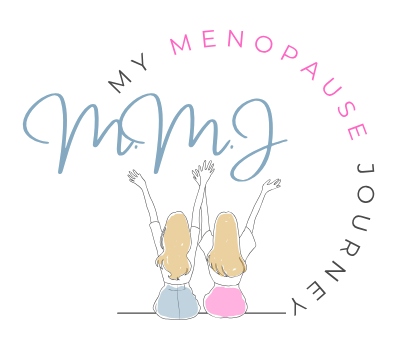The Stages of Menopause
Menopause is a wild ride, and if you’re on it (or about to be), you probably have a lot of questions. What’s happening to my body? Why am I suddenly sweating like a marathon runner at 2 AM? And when will this madness end?! Don’t worry—I’ve got you covered.
Here is the breakdown of the three main stages of menopause, —(perimenopause, menopause, and postmenopause)—into simple, no-BS explanations.
Stage 1: Perimenopause (a.k.a. The Sneaky Stage)

When does it start? Typically, in your 40s, but sometimes earlier.
How long it lasts? On average, perimenopause lasts 4 to 6 years—but if you’re really lucky (cue sarcasm), it can stick around for up to 10 years. (healthdirect.gov.au)
What happens? Perimenopause is like menopause’s chaotic younger sibling—it shows up uninvited and turns everything upside down. Your hormones, particularly estrogen and progesterone, start to fluctuate wildly. One month, your period is a no-show; the next, it’s making up for lost time. It’s like puberty in reverse, and let’s be honest, no one signed up for this twice.
Common symptoms:
- Irregular periods (Mother Nature playing roulette with your cycle)
- Hot flushes & night sweats (because who doesn’t love waking up drenched?)
- Mood swings (crying over a puppy video one minute, raging over the dishwasher the next)
- Sleep problems (if tossing and turning was a sport, you’d be an Olympian)
- Brain fog (Why did I walk into this room? What’s my name again?)
- Weight changes (your metabolism decides it’s taking early retirement)
How to Survive Perimenopause:
- Track your symptoms (so you don’t feel like you’re losing your mind)
- Cut back on caffeine and alcohol (I know, I know—sorry!)
- Stay active (yoga, walking, anything to keep stress in check)
- Talk to your doctor about hormone therapy or natural remedies
Stage 2: Menopause (The Big M)

When it starts: Officially, menopause is when you haven’t had a period for 12 consecutive months. In Australia, the average age for women to reach menopause is 51 to 52. (jeanhailes.org.au)
How long it lasts: Technically, menopause itself is just one day—the anniversary of your last period. But let’s be real, the symptoms don’t just magically disappear at that moment.
What happens: Your ovaries have officially retired. They stop producing as much estrogen and progesterone, which means all those perimenopause symptoms might still be hanging around. The difference? Now, you know you’re in menopause—no more guessing games with your period.
Common symptoms:
- Hot flushes & night sweats (still here, still annoying)
- Vaginal dryness (less estrogen = less natural lubrication)
- Low libido (your sex drive might take a nap… or a long vacation)
- Mood changes (anxiety, irritability, or a general “meh” feeling)
- Joint pain (who knew estrogen helped with inflammation?)
How to Handle Menopause Like a Boss:
- Hydrate like it’s your job (water is your new best friend)
- Use vaginal moisturizers/lubricants (because comfort matters)
- Strength training to keep bones strong (osteoporosis is a real risk)
- Consider HRT (hormone replacement therapy) if symptoms are severe—talk to your doctor
Stage 3: Postmenopause (The New Normal)

When it starts: Right after menopause—so, one full year after your last period.
How long it lasts: The rest of your life! (But don’t panic, it’s not all bad.)
What happens: Your hormone levels settle into their new baseline. The intense symptoms of perimenopause and menopause should ease up (hallelujah!), but new concerns arise—like bone health, heart health, and keeping your body strong as you age.
Common symptoms:
- Hot flushes may still linger (but they usually get milder)
- Higher risk of osteoporosis (due to lower estrogen levels)
- Higher risk of heart disease (estrogen protects your heart, and now it’s MIA)
- Urinary issues (weakened pelvic muscles = more bathroom trips)
How to Thrive in Postmenopause:
- Keep up with weight-bearing exercises (walking, resistance training, yoga)
- Eat a bone-friendly diet (calcium, vitamin D, magnesium)
- Get regular health check-ups (especially for heart and bone health)
- Prioritize self-care (you’ve earned it!)
Final Thoughts: Embrace the Change
Menopause isn’t just an ending—it’s also a beginning. Sure, it comes with some frustrating symptoms, but it also means no more periods, no more PMS, and a whole new phase of life where you get to focus on YOU.
Instead of seeing menopause as a struggle, think of it as a transformation—your body is evolving, and so are you. With the right lifestyle, mindset, and support, you can navigate this journey with confidence, grace, and maybe even a little laughter.
Got a hilarious, wild, or downright frustrating menopause moment?
